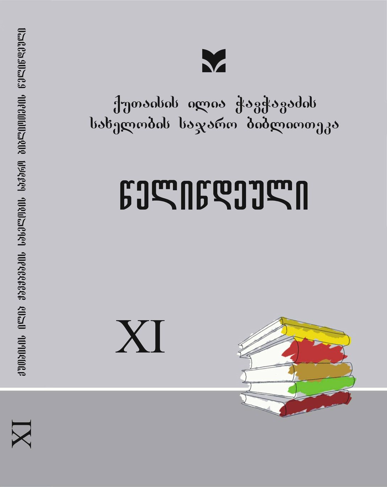Culture of epitaph poetry in Kartli
Keywords:
Epitaph, Ephrem Small, Georgian Epitaph, Classification of Epitaphs, Poetic Form Epitaph, Sol. Kubaneishvili, KartliAbstract
Epitaphic poetry, an epitaph in general, has a long history and past. It originates from ancient Greece. In the fundamental dimension of human existence, Plato exudes courage, which man especially needs during such a higher act as death. Epitaph culture has proved acceptable to many peoples and countries of the world.
Ephraim Small, the greatest ecclesiastical figure, writer, translator, and philosopher of the eleventh century, explained that the epitaph was „a word inscribed on a tombstone.“ In the Christian writing of the narrative genre, there were three directions (faces): „life“, „meeting“ and „epitaph“. Ephraim’s brief commentary on
the epitaph is attached to Gregory the Theologian’s „Epitaph to His Father Gregory of Andian, Bishop,“ and is written on Ashia.
In turn, the source of Ephraim is the tenth-century Byzantine commentator Basil Minus, a grammarian. The existence of the epitaph is ancient in Georgia, but it takes its form from the tenth to the eleventh century. The culture of the epitaph must be related to the tradition of laying a cut stone on the tomb.
An example of an original Georgian epitaph is the famous epitaph of David the Builder. Inscription of the tombstone of one of the members of the feudal house of the supporters, etc.
In Georgia, the epitaph took on a poetic form and became a poem. Georgian epitaph verse is similar to Mestviluri in size and rhythm.
The content is close to the funeral verse. The classification of epitaphs looks like this: small, poetic form, chronographic and dialogical epitaphs. In Georgia, we find mainly poetic, word-based epitaphs containing certain philosophical thoughts. Texts containing Christian-eschatological teachings are also noteworthy for the Georgian epitaph culture.
The epitaphs of „cemetery stones“ collected by Kubaneishvili, played a big role in the study of epitaphs which includes epitaphs in almost all parts of Georgia. In Georgia, Kartli, as well as in other parts of Georgia, the epitaph culture has been well developed since ancient times.
This is confirmed by the epitaphs on almost all cemeteries in Kartli, both old and new. In Kartli, the epitaph poem is characterized by chamber and screen character. Although epitaphic poetry is somewhat „older“, it makes little progress. The mainline of Georgian epitaphs is to understand the essence of life and death, to be thankful to God, and to complain to the miserable world.
In Shida Kartli, in the occupied Samachablo today, there is the tomb of the young son of King Vakhtang VI, on which there is an epitaph. The existence of epitaphs is also confirmed in Samtavi, in the form of epitaphs of the Amilakhvars’s ossuary, and Kvemo Kartli, Fitareti, on the Orbelishvili tombstones.
Epitaphs have cultural-ethnographic, as well as literary and historical value, the study of which sheds light on many controversial issues.




